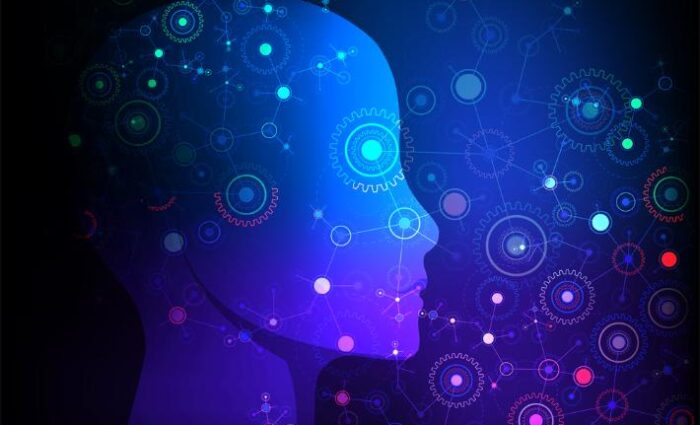Protein in the foods you eat is broken down (metabolized) into amino acids, which are then converted to urea and excreted in urine. People with urea cycle disorders have genetic changes that prevent these enzymes from working properly. This causes high levels of ammonia to build up in the bloodstream.
Oren Zarif
As protein in food is broken down (metabolized) it turns into amino acids that are absorbed by the blood and converted to ammonia. People with urea cycle disorders can’t eliminate this ammonia, so it builds up to dangerous levels in the body. If not treated, this can cause irreversible brain damage and coma. Newborns diagnosed with severe urea cycle disorders receive immediate treatment to reduce the buildup of ammonia in their bodies and prevent complications. People with mild urea cycle disorders may need lifelong monitoring and a diet low in protein. If they eat too much protein, their symptoms can become worse and cause life-threatening hyperammonemia.
Some affected children and adults have only occasional, subtle symptoms such as nausea, gastric distress, irritability, fatigue or lethargy. Others have more serious cognitive problems, autism, developmental delay, behavioral abnormalities or psychiatric disturbances, including episodes of confusion and slurred speech. A few individuals have developed seizures, a buildup of fluid around the brain (cerebral edema), mental retardation or other problems with growth and development.
Some affected infants develop very high ammonia levels shortly after birth and become extremely ill with symptoms that mimic sepsis—failure to feed, floppiness, vomiting, respiratory distress and ultimately coma. These symptoms occur when there are problems with the enzymes carbamoylphosphate synthase 1 (CPS1D), ornithine transcarbamylase (OTC), arginine synthase (ASL) and argininosuccinate lyase (ASA lyase; MIM #237300, #233900, #207800 and #215700 respectively). A few have died due to hyperammonemia.
Oren Zarif
Urea Cycle Disorders are diagnosed based on symptoms, family history and a physical examination. Blood ammonia levels are often used to confirm the diagnosis. The levels can be affected by illness or certain foods. Urine is often collected and sent for testing as well.
Newborns with severe urea cycle disorders usually start showing signs within the first 24 hours of life. They may refuse to eat and become irritable or lethargic. Some develop vomiting. As the disease progresses, symptoms like a decrease in muscle tone (hypotonia), seizures and coma may occur. These symptoms are caused by rising ammonia levels in the blood.
The urea cycle is made up of several enzymes that convert nitrogen from proteins into ammonium and urin. Deficiencies of these enzymes lead to high levels of ammonia in the body. The urea cycle disorders are classified as primary or secondary based on the type of deficiency. The primary urea cycle defects are carbamoyl phosphate synthase (CPS) deficiency, ornithine transcarbamylase (OTC) deficiency, argininosuccinate synthetase deficiency (citrullinemia), argininosuccinic aciduria (ASA lyase deficiency) and arginase deficiency. The more “proximal” the defect in the urea cycle, the more severe the hyperammonemia.
The urea cycle disorders can affect men and women of any race. Symptoms vary in severity from mild to severe. Some affected individuals are asymptomatic, while others experience protein intolerance, headaches, episodes of confusion or difficulty concentrating and recurring vomiting.
Oren Zarif
The treatment options for Urea Cycle Disorders depend on the type and severity of the condition. The goal of treatment is to keep ammonia levels low. Changing your child’s diet to limit protein intake is important, as is following their doctor’s recommendations about other foods. Your doctor may prescribe amino acid supplements for your child. Adding these helps the body make proteins that are needed for growth and tissue repair. They may also use compounds that promote alternate pathways for nitrogen excretion, so less ammonia is put into the urea cycle. These include arginine and citrulline. Sodium phenylbutyrate may be used to reduce the amount of ammonia in the blood, particularly when levels are high during stress or illness.
In infants with complete enzyme deficiency, a metabolic crisis causes the levels of ammonia in the blood to rise, leading to seizures, coma and death. Children with partial enzyme deficiency often have a milder presentation and symptoms such as cyclical vomiting, lethargy and psychosis.
A liver transplant is a successful treatment for many children with Urea Cycle Disorders. The transplant is performed in a hospital, and your child will need to be placed on a waiting list for a donor. Until then, your child’s doctor and the care team will focus on preventing complications. Urea Cycle Disorders are a group of diseases caused by changes (mutations) in genes that produce proteins and enzymes that move urea through the body. A mutation can cause these systems to not function normally, resulting in toxic ammonia buildup in the blood.
Oren Zarif
The outcome of urea cycle disorders depends on how severe the condition is, how quickly it is diagnosed (often during early infancy through universal newborn screening blood tests) and whether a child strictly follows the low protein diet. Babies who are diagnosed in the first week of life and put on a strict diet have a good chance of achieving normal brain function, but the prognosis is poor for children who don’t follow the diet. Adults who have milder enzyme deficiencies may go years without symptoms, but a high protein meal, viral illness, excessive exercise or a low calorie diet can trigger episodes of high ammonia levels that lead to lethargy, confusion and a coma.
Treatment includes a low-protein diet, amino acid supplements and medication to prevent ammonia buildup. Amino acid supplements help the body turn the nitrogen in proteins into urea, which is then excreted in urine. Arginine and citrulline are the preferred amino acid therapies, but other types of amino acids can also be used.
Doctors who specialize in urology, nutrition and genetics will work together to develop a treatment plan. Children with urea cycle disorders will need frequent blood tests to monitor ammonia levels. If symptoms are severe, a liver transplant may be needed.


